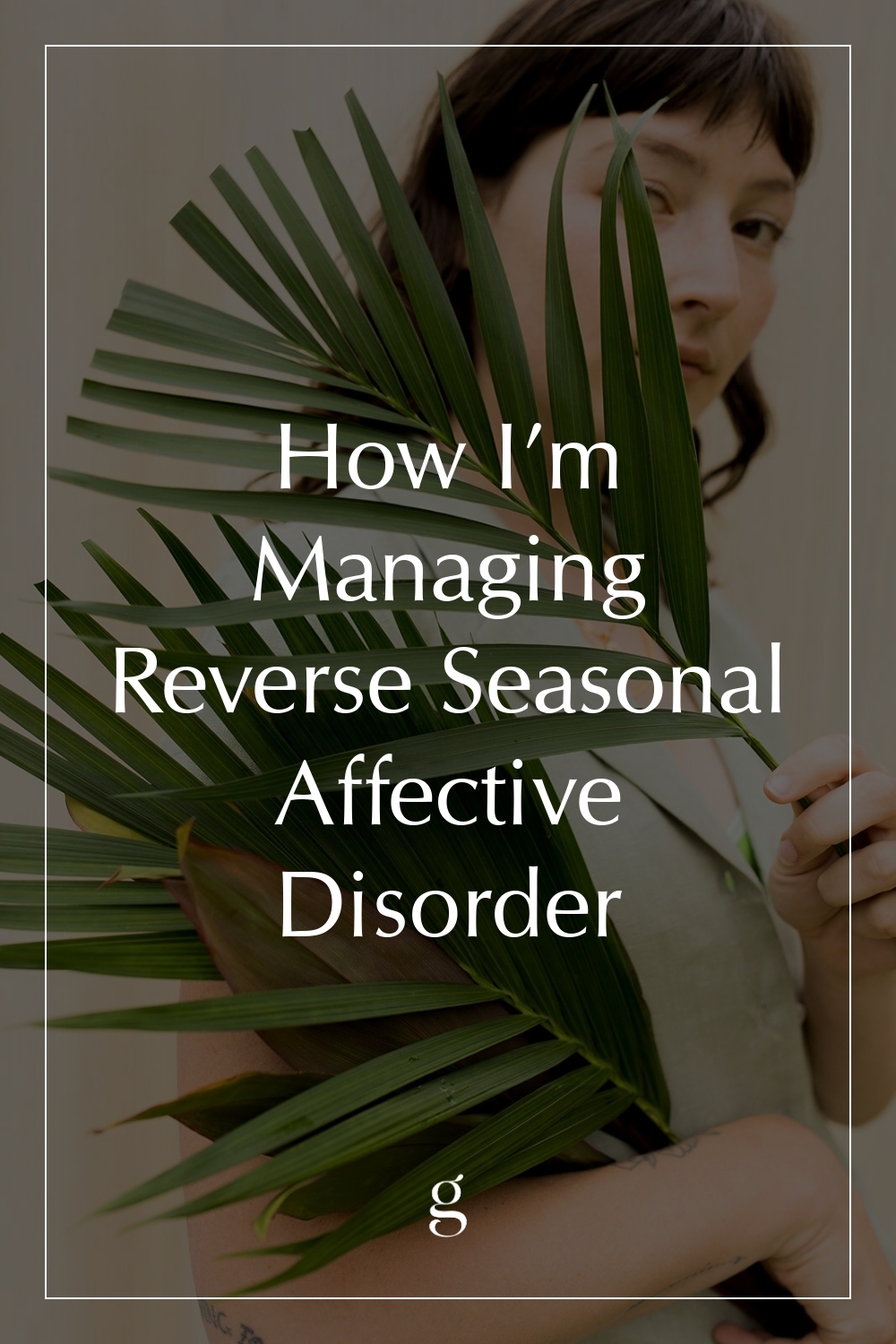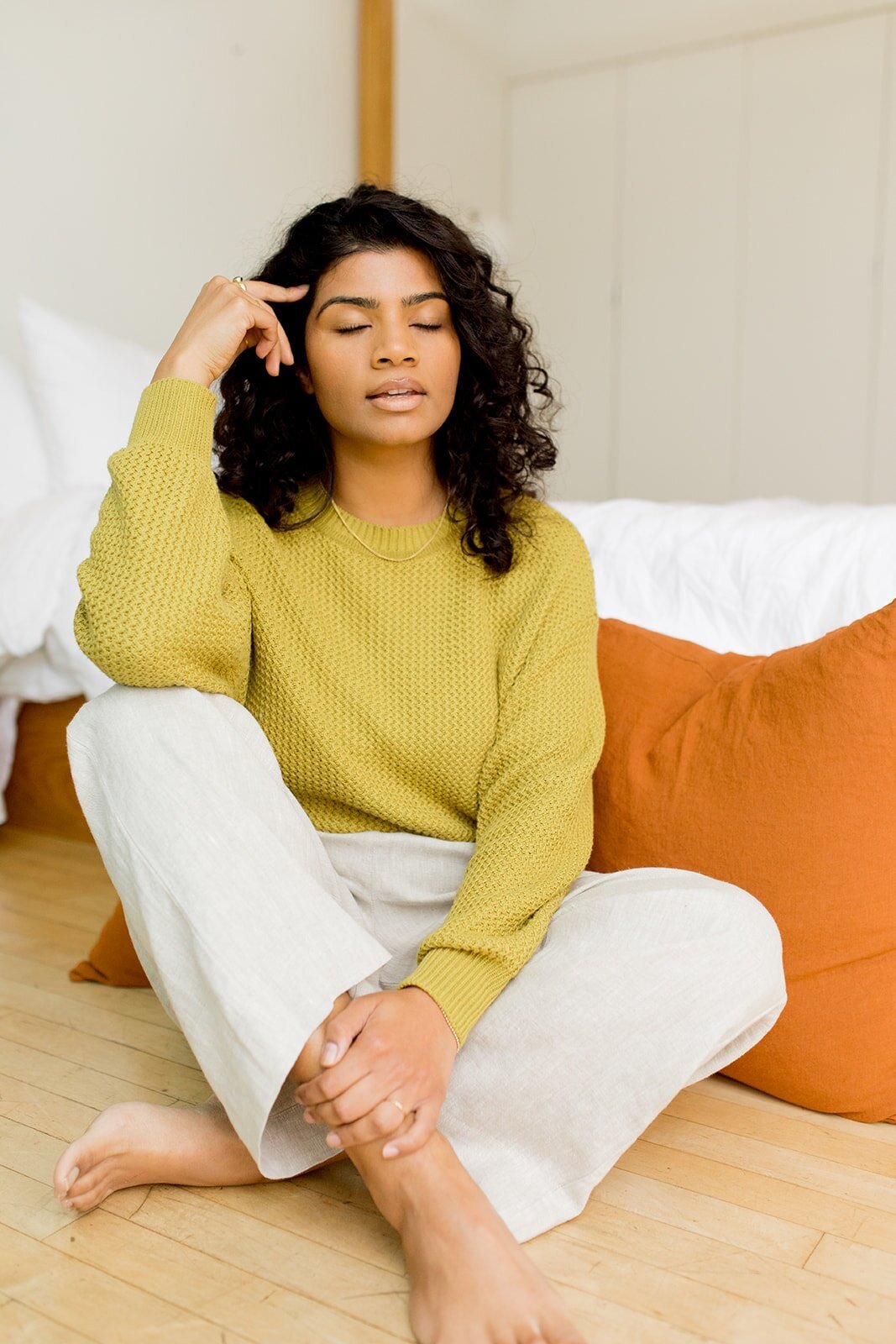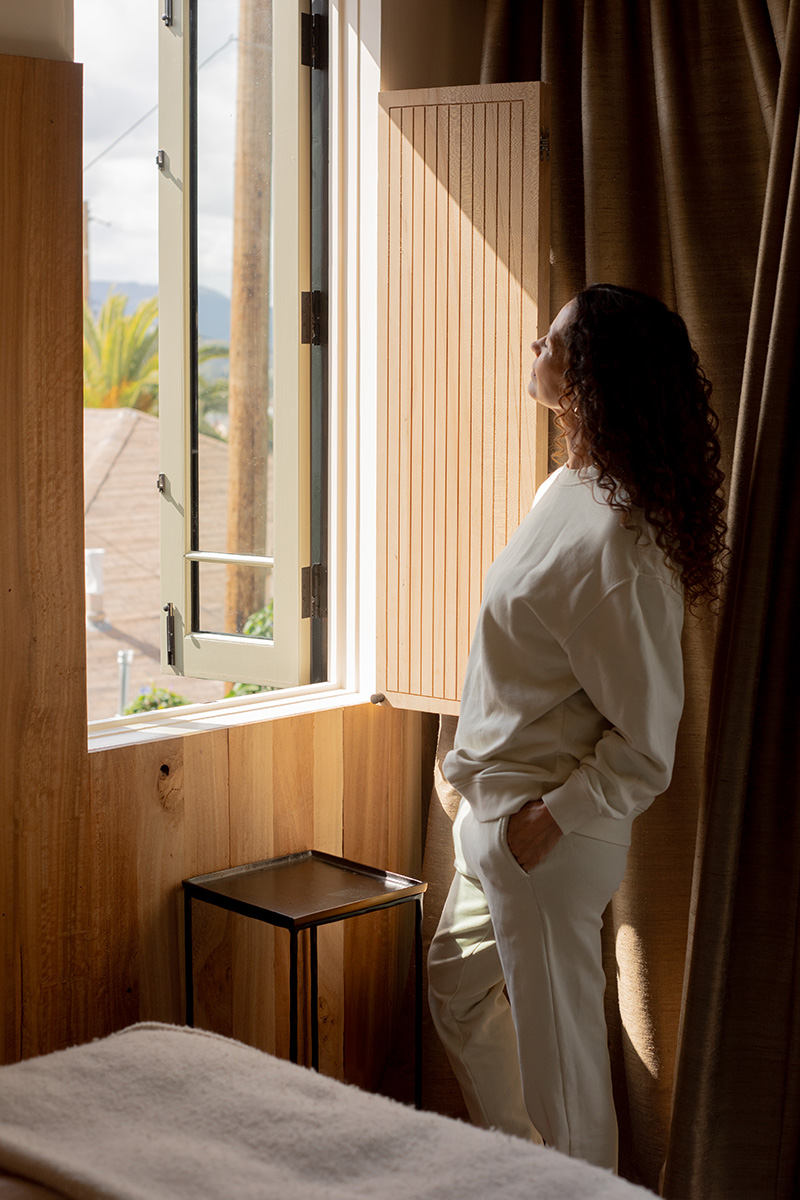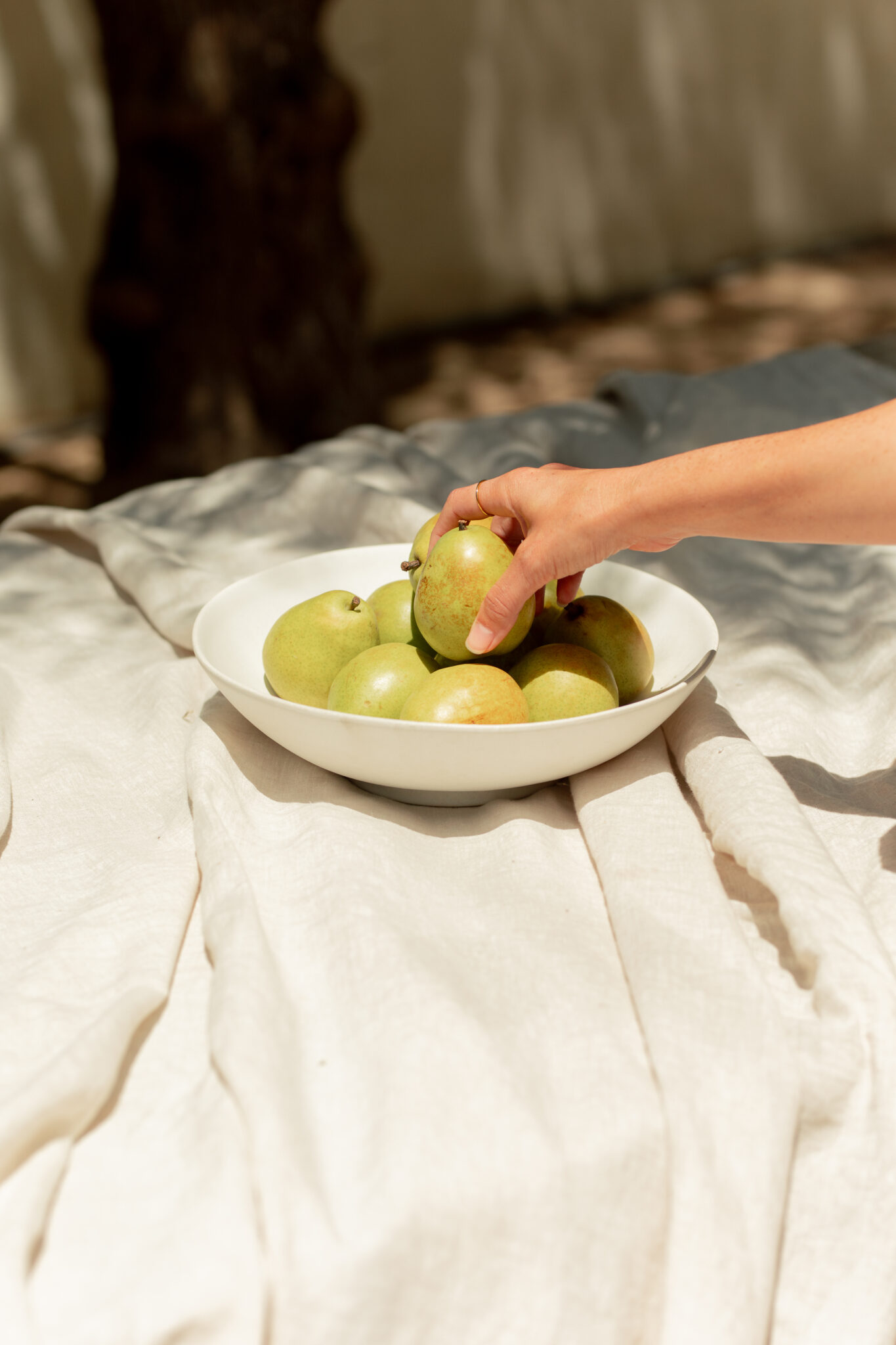
How I’m Managing Reverse Seasonal Affective Disorder
I used to love the summer. In the summers of my childhood, my sister and I visited my grandparents’ house for weeks at a time, where the days were lazy and long and we slept in our swimsuits. Each morning, after eating sugary cereal (the kind only allowed on vacation), we’d burst through the screen door to the front yard. You could hear the sprinklers before seeing the water. Short sputters turned to steady chatter. “Na na na na na, you can’t catch us!” We chanted at the spigots, sucking our tummies in. But no matter how fast we ran, the water caught us. It rained on our tiny bodies, sopping our ponytails and turning the grass into a pond.
Lately, I’ve noticed my love for summer has lessened over the years. Sometimes, I even feel increasingly anxious in late spring. It’s only three months, you can do this, you can make it until September, I tell myself as the temperatures rise. But then summer comes, and all I crave is cooler air, higher altitudes, and colder water. I lose energy and my appetite, and sadness sets in. I stay inside to try and cure my mood, hiding in dark corners with my face in a fan. It hardly helps though. I simply want to fall into a pool and float away—or at least stay there until mid-September. I yearn for that first day of autumn like water in a drought.
“I simply want to fall into a pool and float away—or at least stay there until mid-September. I yearn for that first day of autumn like water in a drought.”
As it turns out, my summertime sadness may be more than an annoyance with the weather. Seasonal Affective Disorder (SAD) doesn’t only come around in winter’s gloom.
“About one in 10 cases of the Seasonal Affective Disorder are contributed to the summer months [or winter, for those living in the southern hemisphere],” says Dr. Meghan Marcum, a Board Certified Clinical Psychologist and the Chief Psychologist at A Mission for Michael, a premier mental health treatment facility in Southern California.
According to The National Institute of Mental Health Information Resource Center, SAD is “a type of depression characterized by its recurrent seasonal pattern, with symptoms lasting about four to five months per year.” While many of the symptoms are similar to those of major depression, summer SAD has its own unique symptoms, too, including insomnia, restlessness, agitation, lack of appetite, and anxiety.
To cure this sadness, I’ve often remained a homebody, watching endless movies on weekends or working through a stack of books. But, Marcum notes, this may actually result in anxiety or depression. “In places like Phoenix, for example, the sweltering heat necessitates staying indoors, which means isolation, and that can also trigger a depressed mood,” she says.
And then there is the lack of routine that comes with summer (especially for parents), body image narratives, financial worries from spending on vacations, less sleep, and increased alcohol consumption at parties. These are other possible reasons people may feel symptoms of SAD in summer, according to Sara Makin, a licensed professional therapist and the founder and CEO of Makin Wellness.
People can even have a genetic predisposition that makes seasonal affective disorder more likely, or they could associate summer with pain, loss, or challenging memories. “The summertime may bring back memories and feelings of the death of a loved one, a recent breakup or divorce, or perhaps a traumatic event,” Makin explains.
“People can even have a genetic predisposition that makes seasonal affective disorder more likely.”
According to some psychologists, FOMO [fear of missing out] can also be a factor. “Misery likes company, and in the winter you’ve got a lot of company,” Dr. Norman Rosenthal, an SAD expert and a clinical professor of psychiatry at the Georgetown University School of Medicine, told TIME. “When everybody’s at the beach, they’re having a blast, they’re doing all these things, and if you’re feeling bad, you really feel like an outsider. Feeling isolated, feeling left out, is a major stress, challenge and psychological downer.”
Managing SAD in Summer
Everyone’s experience with SAD is different. It may hardly be noticeable—like mornings when you linger in bed, in the dark, next to your fan. Or it could be more apparent, like seemingly unexplainable depression and months of insomnia. The important thing to remember is that, no matter your experience, you’re not alone, and there are resources to help.
“The best tips for minimizing the effects of SAD are to maintain healthy habits for your physical and mental health,” says Marcum, who stresses the importance of sleep. “Just because the days are longer doesn’t mean we need less sleep. Continue to aim for 8 hours of sleep every night. Eat a healthy, balanced diet, exercise to boost dopamine and flush out cortisol (a stress hormone), and spend a little bit of time in the sun.”
Some therapists also recommend taking mid-day naps, keeping cool by taking cold showers, and talking to your doctor about increasing medication for summer, if that feels right for you.
For me, I’m learning to handle warmer months with practical actions—like ensuring my AC is in working order—and by gently encouraging myself to make intentional mindset shifts.
One way I’m practicing this is by leaning into the activities I love rather than forcing myself to enjoy those I’ve believed to be stereotypical to summer. Visiting museums or libraries (where there is an equal amount of AC, people, and silence) offers energy and creative inspiration. It also gets me out of the house and away from isolation.
“I’m leaning into the activities I love rather than forcing myself to enjoy those I’ve believed to be stereotypical to summer.”
When it comes to mindset shifts, I’m trying new activities and testing summer’s waters, so to speak. This includes indulging in summer foods and seeking out places to enjoy the heat. It’s amazing how much a popsicle can lift your mood or how an afternoon by the pool can erase brain fog. I’m journaling through these thoughts and logging my new adventures. Likewise, I’m reminding myself that I have a community of friends and family I can call when the sadness feels too heavy.
Finally, I’m wearing only my swimsuit. I remember how much I loved living in my one-piece as a kid—around the house, riding my bike, at the dinner table. So instead of moping around the house in puddles of sweat all summer, I’m donning swimwear instead (just not on Zoom, of course). Maybe I’ll even set up a sprinkler in my front yard and sit beneath a homemade rain shower on the days I feel the summertime sadness most. Then, I can remind myself that all seasons are momentary. The heat, too, will pass.
Kayti Christian is the Managing Editor at The Good Trade. She has a Master’s in Nonfiction Writing from the University of London and is the creator of Feelings Not Aside, a newsletter for sensitive people.





